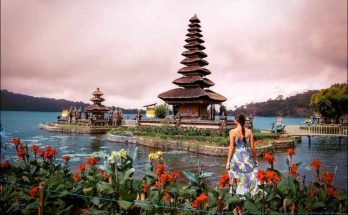Evanston (601 alt., 74,239 pop.), fronting largely on Lake Michigan, and with an extension stretching westward at the northern edge of the city, is roughly L-shaped. It is the first of the North Shore suburbs, divided from Chicago only by Calvary Cemetery. Although its development hinged somewhat on the tremendous expansion of Chicago, Evanston retains a distinct individuality and runs a temperature at being referred to as an off-shoot of that city.
Aristocratic and self-sufficient, it considers its proximity to Chicago little more than a geographic accident. In appearance it is almost an Illinois anomaly, the dignity and spaciousness of its residential districts contrasting sharply with the noisy, virile metropolis on the south. Untouched by the peculiar tumult that Sandburg calls the “harr and boom” of the early 1900’s, Evanston felt no need to conform its city plan to the intense concentration of the new industrial age. The through traffic boulevard system that traverses Chicago’s lakeside parks stops short at the threshold of Evanston.
Here the lake front is given over to quiet streets that wind through small parks and past brick walls enclosing spacious city estates. Pere Marquette and his Indian companions landed in 1674 in the natural harbor formed by the 25-foot bluff now named Grosse Point. Marquette’s diary has an account of the incident and a sketch of his fleet of ten canoes drawn up on the sands. In pioneer days, as lake traffic increased, Grosse Point assumed some importance as a port, and a village grew up around it, settled by those who followed the inland seas. For some time a faint maritime atmosphere clung to the community; a number of families at the present time trace their descent from the early Great Lakes captains.
The first dwelling on the “Point” was built in 1826, but it was not until 1854, the year before Northwestern University opened, that the town was platted. At that time it was renamed Evanston, honoring John Evans, one of the university founders and a prominent early citizen. The subsequent blend of the maritime (enhanced by the Grosse Point lighthouse) and the academic, won Evanston the sobriquet of “the finest New England village in the Middlewest.”
In the year 1855 Northwestern University opened, after its founding fathers had considered Chicago sites and rejected them. Although it was under the control of the Methodist Episcopal Church, the school proclaimed that it was “not intended to be sectarian, but the minds committed to its care will be induced to the practice of virtue and religion.” In its second year the school charter was revised to prohibit the sale of liquor within four miles of the campus ( Evanston is still dry).
Shortly afterward, in nice coincidence, Frances E. Willard came here with her family from Janesville, Wisconsin. In the following forty years she became Evanston’s most famous citizen, serving as Dean of Women and Professor of Æsthetics at Northwestern, and later organizing the World Women’s Christian Temperance Union. Among her many writings was a glowing tribute to Evanston, entitled The Classic Town.
Early Evanston was a tiny town concerned largely with its university. Twenty-five years after the school was founded Evanston’s population was only a scant four thousand, and not until 1892, when it annexed South Evanston, was it incorporated as a city. But after the turn of the century the city began to emerge as a suburb. Already cheap and efficient transportation had welded it economically to Chicago, and the booming of the metropolis could not help but be felt here. From twenty thousand in 1900, the population doubled in twenty years, and then almost doubled again in the decade ending in 1930.
Views: 190



